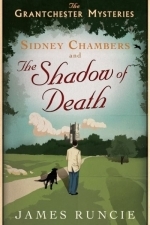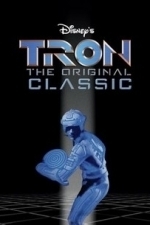
Grand Theft Auto: Liberty City Stories
Games
App
*** PLEASE NOTE: This game is officially supported on the following devices: iPhone 5 & 6 Series,...
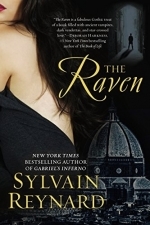
The Raven (Florentine series Book 1)
Book
From the New York Times bestselling author of the Gabriel series comes a dark, sensual tale of...
romance paranormal vampire fantasy Florence Uffizi
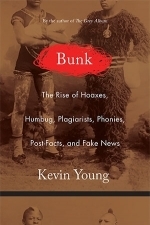
Bunk: The Rise of Hoaxes, Humbug, Plagiarists, Phonies
Book
Kevin Young traces the history of the hoax as a peculiarly American phenomenon—the legacy of P. T....
history politics social issues
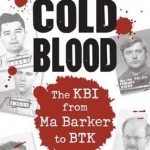
Beyond Cold Blood: The KBI from Ma Barker to BTK
Book
Ma Barker and Pretty Boy Floyd once shot their way across the state, and Bonnie and Clyde were known...
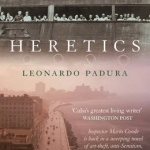
Heretics
Leonardo Padura and Anna Kushner
Book
A sweeping novel of art theft, anti-Semitism, contemporary Cuba, and crime from a renowned Cuban...

Family Locator Locategy
Lifestyle
App
Locategy is a family locator with parental control features: allows parents to locate their kid’s...
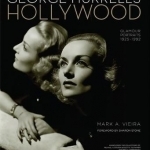
George Hurrell's Hollywood: Glamour Portraits 1925-1992
Mark A. Vieira and Sharon Stone
Book
George Hurrell (1904-1992) was the creator of the Hollywood glamour portrait, the maverick artist...
Purple Phoenix Games (2266 KP) rated Aristotle's Elements and Space in Tabletop Games
Nov 5, 2020
Aristotle’s Elements and Space is a party style card game for three to five players. Players will be attempting to play elements to triumph over their opponents by using tried and true rock-paper-scissors style play.
DISCLAIMER: We were provided a prototype copy of this game for the purposes of this review. These are preview copy components, and I do not know for sure if the final components will be any different from these shown. Also, it is not my intention to detail every rule in the game, as there are just too many. You are invited to download the rulebook, back the game through the Kickstarter campaign, or through any retailers stocking it after fulfillment. -T
To setup stock the token bag (not pictured) with tokens according to the rulebook suggestions for number of players. Each player will blindly choose three tokens from the bag to place in front of themselves within reach of all players. Shuffle the element cards and deal each player seven. Determine the first Aristotle player and place the Aristotle card facing that player. Shuffle and deal out three Element of Surprise cards face-down within reach of all players. The game may now begin!
Each game lasts seven rounds. At the start of each round players will secretly choose a card from hand to play to the table face down. Once all players are ready all players must simultaneously say out loud, “Aristotle,” while flipping over their cards. When all cards are revealed the Aristotle player will compare cards with the player on their left. Whichever element card played triumphs over the other will win that battle and continue onward clockwise to battle the other players. This continues until one player has triumphed all the cards and taken the trick. The Aristotle card is then given to the next player in clockwise seating to begin a new round. This is how a basic game is played.
More advanced games will include Power Up Tokens and the Element of Surprise Cards. In order to use a Power Up Token a player would first need to have successfully stolen another player’s token during a round of play. To successfully steal a token the player will physically take a token from another player without being touched by that player. Should the defending player touch or slap the offensive player’s hand during the theft, the heist is unsuccessful. Once stolen a token may be used on a subsequent round.
The Power Up Tokens increase the number of elements that may be triumphed using a particular element. For instance, Fire typically triumphs over Earth and Wind, but with the Power Up Token also applied the Fire triumphs over Earth, Wind, AND Water. A most welcome twist! Also, during a round in which a player is acting as Aristotle they may, once cards are revealed, call, “Element of Surprise!,” and choose a face-down card to read aloud to the group. These cards add a goofy rule that must be thenceforth followed, gives prompts for the players to discuss, or has players searching the room/house/wherever for items to bring back to the table first.
Play continues in this fashion until the last round, where triumph rules are reversed. When all cards have been played the winner is the player who won the most tricks.
Components. Again, this is a prototype version of the game. That said, what we received was a bunch of cards and the Power Up Tokens. The tokens are fine – laser cut plywood discs painted on both sides to match the elements they modify. The cards are glossy and feature unique art. The art is, well, just okay for me. It’s not terribly exciting, but it is very colorful and not bad, necessarily. I feel like the art could be improved some, but art is always a personal preference.
The gameplay itself is certainly a hodge-podge of mechanics from other games that, for the most part, are well-used for a very light trick-taking card game. I enjoy playing it using the Power Up Tokens, but for me and my group, we passed on the Element of Surprise cards. They add a different twist to the game that isn’t necessarily Quelf-ish, but also doesn’t add much to the game. They merely add a distraction from the game. I can see many people totally diggin’ those cards, and I probably would use them if converting a game-noob, but for more serious gamers, just leave them out.
If you are looking for a very light and different trick-taking card game, check out Aristotle’s Elements and Space. I am not entirely sure if any components will be updated before going to retail, but even if not, they are pretty decent. The gameplay is quick and easy to teach; I think I will try it with my 4-year-old as well. This is a decent gateway filler that could fit very well in many collections. Give it a look!
Hazel (1853 KP) rated Sidney Chambers and the Shadow of Death in Books
Jul 27, 2017
In 2014, ITV broadcasted the first episode of Grantchester, a drama series based on books by British novelist, James Runcie. Although written during the twenty-first century, the story is set in the 1950s in a village on the outskirts of Cambridge. Sidney Chambers, a young Canon in charge of the Church of St Andrew and Mary, is a polite and friendly character who, despite his reluctance, ends up acting as a detective in a variety of crimes.
Sidney Chambers and the Shadow of Death is the first book of six in The Grantchester Mysteries. Split into six individual baffling cases, the background story of Sidney’s private life continues to develop throughout. Each crime is committed and swiftly solved by the Canon and his friend, Inspector Geordie Keating, although it is Sidney who ultimately resolves the case.
Murder, jewellery theft and art forgery and just some of the felonies Sidney grudgingly gets involved with. In fact, unresolved crimes tend to land in his lap rather than offering his assistance willingly. Up at dawn to work on sermons before rushing off to capture criminals, Sidney is never off duty.
A vicar may seem like an unlikely candidate for a detective, however, people tend to open up to him and unintentionally reveal delitescent information. Listening to suspects and witnesses without pre-judgement allows Sidney to think things through carefully rather than jumping to conclusions. From the moment the crime is committed right up until the story’s denouement, Sidney passionately does everything he can to make sure the correct culprit is discovered.
What makes this series different from other crime novels is the focus on Sidney Chambers’ own life. James Runcie emphasises the loneliness of a bachelor living in a vicarage with only a curate and crotchety housekeeper for company. Readers are drawn into Sidney’s stories and hold onto the hope that his dalliances with the beautiful Amanda turn out to be something more concrete.
Those who have watched the ITV series will be familiar with the stories in this book because the producer has stuck to the exact storyline, not missing a single thing out or adding anything extra. The fact that there were only two years between publishing and screen production goes to show how well written and thought out these stories are. Unlike famous detective novels such as Sherlock Holmes or those by Agatha Christie, The Grantchester Mysteries are not set at the time of writing, so, although they are historically accurate, the prose is suitable for present day readers.
Each story is quick to read and is easy going, making it a relaxing and enjoyable book. It is not a thriller or horror, although some of the crimes are quite terrible. Instead, it is entertaining and often humorous. It is suitable for crime fiction fans as well as those new to the genre.
Regardless of whether you have watched the television series or not, Sidney Chambers and the Shadow of Death is a delight to read. Of course, ITV has given away all the endings, but it is a different experience to read it in print rather than seeing it acted out on screen. Featuring the face of James Norton on the cover so as to work as a TV tie-in, the series will be easy to spot in prime position on bookshelves both in shops and personal collections.
Jesters_folly (230 KP) rated TRON (1982) in Movies
Nov 17, 2020
Basically Ed Dillinger is the boss of an evil corporation, Encom, (yes IT corporations were evil as far back as the 1980s) who got to where he was by stealing the programs of five arcade games from Flynn. Ed is being blackmailed by the 'Master Control Program' or 'MCP' for short, a rouge A.I. that believes it can rule the world better than humans.
Alan works at Encom and is trying to create a Data monitoring program called Tron. Alan is also dating Flynn's ex, Lora who also works at Encom, in a department that is developing a way of digitising mater and transporting it down a laser beam to a new destination. The three team up to help Flynn find the proof of the theft but the MCP digitises Flynn who finds himself used as a gladiator in the program. When Flynn meets the Tron program they team up to bring the MCP down.
First off the whole thing could have been stopped if Encom had proper health and safety, the computer that Flynn was using was the same one that operated the digitising laser and the laser was set up right behind the screen with barriers or other safety measures.
Ok in all seriousness the concepts in Tron were quite advanced, baring in mind that this was out in 1983, a time when home P.C.s were just beginning to become popular and the internet wasn't really around (there were networked computers but really only in offices) Tron brought us a concept of Cyberspace (although it wasn't called that in the film), a world where the computer programs live and the games are real. Not only that but everything is linked together, there weren't any networked games back then any you had to go to an arcade to play most of the games that existed.
By todays standards the Cyberspace world wouldn't feel right. It is a lineal landscape with fractural crystals coloured in greys, red and blues, a far cry from Wreck-it Ralph's advert filled, brightly coloured internet. Again this is due to when it was made, no internet, no advertising and, of course the computers of the time had slightly less memory than the ones today, with the ZX81 being released that year with a massive 16 or 48 Kb of memory, yes kiddies that's Kilo-bites, not even one meg so the games that were available were quite basic (compared to what we have today) an, of course, outside of an arcade those games would have been stored on floppy disk or cassette tape.
The action in Tron is muted, mainly kept to bike crashes and people throwing Frisbees at each other but this is because Tron is; 1) a kids film and 2) a Disney film. The muted action doesn't take away from the film though, it's still an enjoyable adventure film whose influence can be seen even now with films like Wreck-it Ralph.
For a film that is mostly early 80's CGI (or even just early CGI) Tron hasn't aged too badly and the story could easily have been written now, especially with the recent advent of LitRGP books and 'Isekai' anime such as 'Sword Art Online'.

